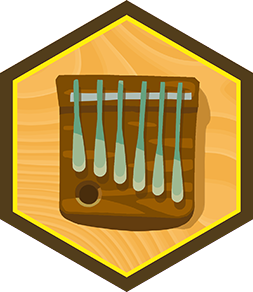Make A Cup Phone
Make a simple cup phone using two paper cups and string to explore sound vibrations and communication over distance through hands on experimentation.



Step-by-step guide to make a cup phone
Paper Cup Telephone | Only 3 Materials and 3 Easy Steps | How to Make Paper Cup Telephone
Step 1
Gather all your materials and place them on a clear table.
Step 2
Cut the string to about three meters long with the scissors.
Step 3
Use the pencil to poke a small hole in the center of the bottom of the first cup.
Step 4
Use the pencil to poke a small hole in the center of the bottom of the second cup.
Step 5
Push one end of the string through the hole in the first cup from the outside to the inside.
Step 6
Tie a big knot on the string close to the inside of the first cup so the string cannot slip back through.
Step 7
Push the other end of the string through the hole in the second cup from the outside to the inside.
Step 8
Tie a big knot on the string close to the inside of the second cup so the string cannot slip back through.
Step 9
Walk backward while holding one cup so the string pulls straight and becomes tight.
Step 10
Put a small piece of tape over each knot inside the cups to secure the knots.
Step 11
Trim any extra string close to the knots with the scissors.
Step 12
Test your cup phone by having a friend hold one cup to their ear while you speak a short message into the other cup.
Step 13
Share your finished creation on DIY.org
Final steps
You're almost there! Complete all the steps, bring your creation to life, post it, and conquer the challenge!


Help!?
I can't find thin string—what can I use instead?
If you don't have the thin string, use about three meters of yarn, fishing line, or strong dental floss and still poke holes with the pencil so the substitute feeds through like the string.
The phone is quiet or crackly—how do I fix it?
If you can't hear well, make sure the string is pulled straight and tight (step 'Walk backward while holding one cup'), that each end has a big knot taped inside the cup, and trim any extra string so it doesn't rub against the cup walls.
How can I change this activity for different ages?
For younger kids have an adult pre-cut the three-meter string and poke the holes with the pencil while the child ties knots and adds tape, and for older kids increase the string length, test fishing line versus yarn, or build a three-person network.
How can we extend or personalize the cup phone once it's made?
Decorate the cups before using the pencil to poke holes, thread beads onto the string before tying the knots for a handle, or swap between paper and plastic cups to compare sound quality when you test the phone.
Watch videos on how to make a cup phone
How to Make a Paper Cup Telephone 📞 | STEM Science Fair Winner 🏆 | Fun Science Experiment for Kids
Facts about sound and vibrations
🛠️ A cup phone is a tiny acoustic transducer — it converts your voice’s air vibrations into vibrations in the cup and string, then back into sound at the other end.
📏 In quiet conditions a well-made cup phone can let you hear someone tens of meters away if the string stays straight and tight.
🧵 Non-stretchy, thin lines (like fishing line or strong cotton) usually carry vibrations more clearly than stretchy yarn.
🔊 Sound travels better along a tight string than through air alone, which is why a taut line helps the cup phone work.
📞 Tin-can/string telephones (aka cup phones) were common simple communication toys long before electric phones existed.
How do you make a cup phone?
What materials do I need to make a cup phone?
What ages is this activity suitable for?
What are the benefits of making a cup phone?


One subscription, many ways to play and learn.
Only $6.99 after trial. No credit card required


